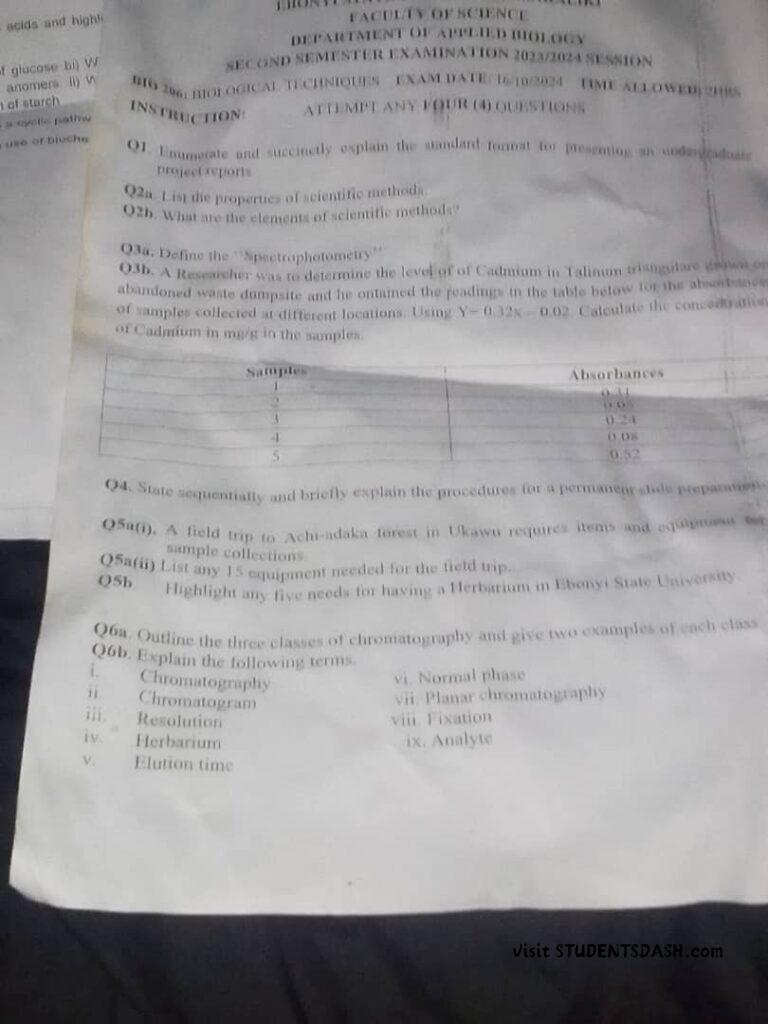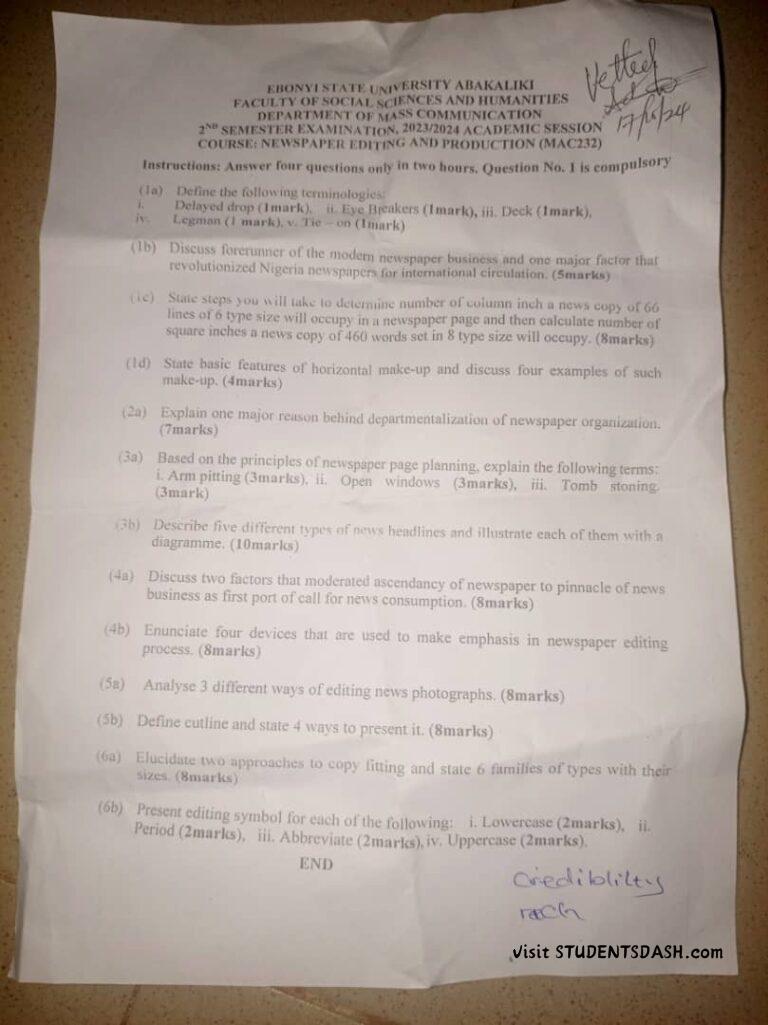BIO 206 Past Questions and Answers


Join @Studentsdash on TG ANSWER TO QUESTION 1 (a) Draft three suitable topics for public relations…
Join @Studentsdash on TG In this post, we’re sharing EBSU GST 108 Past Questions and Answers….

Join @Studentsdash on TG 1. What is the basic unit of matter?A) MoleculeB) AtomC) CompoundD) ElementAnswer:…
Join @Studentsdash on TG

Join @Studentsdash on TG
Join @Studentsdash on TG